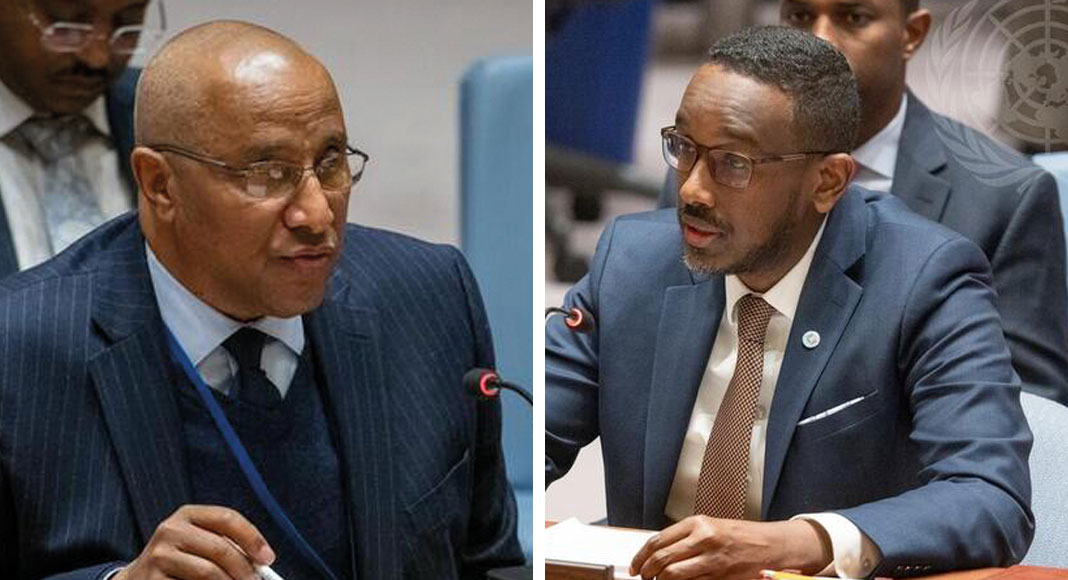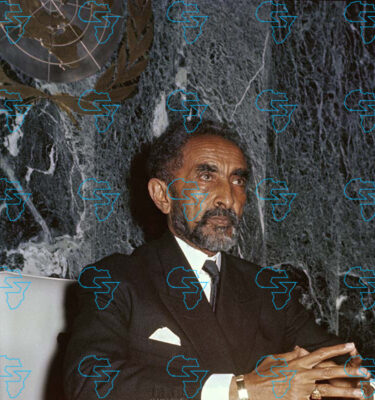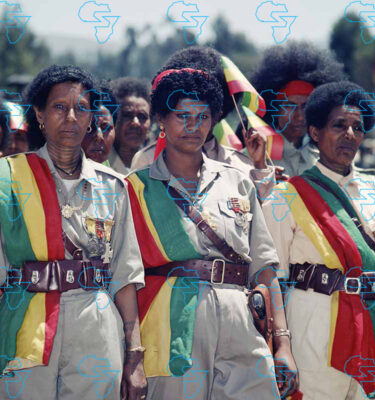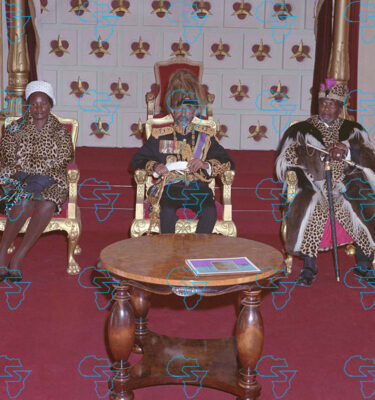
Mehal Gob is a small village in the Amhara region’s Bezo Kebele, located just 14 kilometers from Debre Birhan. On Friday, December 6, 2024, residents of the quiet village lived through their worst fears. A drone strike on their fields and Bezo school, killed 11 people and destroyed part of their harvest.
The attack has no doubt left a lasting impression on village residents, but when members of the media, including The Reportervisited last week, nobody was willing to talk about the horror.
“Don’t you want me to live?” asked the relative of one victim.
A member of the clergy disclosed that two people survived the attack with injuries, while the rest have been buried. He was unwilling to speak further,
“Government forces believe members of the Fano group were hiding among the residents of Mehal Gob,” said another eyewitness.
– Advertisement –
Mehal Gob is also the name of one of the several mountains surrounding Debre Birhan.
The area has been hit by other drone strikes, including one in which several people were killed while on their way home from church. Still, witnesses and relatives of the victims are too afraid to speak to the media.
“My little brother was detained by the government and taken to a military camp just because he told people that he is a victim of a drone strike,” said Addisu, a resident of Debre Birhan.
He told The Reporter that he lost a cousin in a drone strike in Sasit, a small town north of Debre Birhan, a few months ago. Addisu says the relatives of victims have been warned not to speak to anyone.
“A number of relatives who spoke to the media were detained,” said Addisu. “Their whereabouts are unknown.”
The Reporter attempted to speak to the family members of dozens of drone strike victims, eyewitnesses, and survivors in Dawint Woreda, North Wello, and Zibist in Gojjam’s North Achefer Woreda, as well as several other parts of Amhara and Oromia. Very few were willing to speak out.
“The drone attacks are horrific. But the government’s actions against those who speak about them have become more dreadful. The moment a drone strike takes place, local officials and security forces make a list of the names of the relatives of people who have died in the attack. Then they warn them and eyewitnesses not to speak about the attack. Those who do speak are detained and never seen again,” said Addisu.
Even experts working for the Ethiopian Human Rights Commission (EHRC) say they are having a hard time convincing people to speak about drone strikes.
This is despite the frequency with which the strikes occur in Amhara and Oromia, each adding to the list of casualties and fatalities.
A recent strike in Yifat, Efratana Gidim Woreda, which took one life, is more the exception than the rule as other attacks often leave many more injured or dead in their wake.
A few weeks ago, eyewitnesses and victims’ families told the BBC that an estimated 50 people were killed by a drone strike targeting a heavy truck in North Wello.
Eyewitnesses said that the attack took place in an area called Segora, near the market town of Hamusit.
“I counted more than 50 bodies,” said one witness, adding that 10 people on the truck, as well as the driver, sustained injuries.
Though the area has been under Fano control since September, there was no active fighting between Fano and the government in the vicinity on the day of the drone strike.
Media outlets reported that an 83-year-old woman was killed and several others injured by a drone strike on November 24 in Bilbla, also in North Wello. Similarly, another strike left several people, including children and pregnant women, dead in South Achefer, North Gojjam Zone.
Witnesses and residents told the BBC the attack featured three consecutive strikes on the small town of Arge (Zebest), located 40 kilometers from the Woreda seat in Durbete. The drone targeted the town market, a primary school, and a health center, affecting everyone from children to the elderly.
Residents said that the drone strike targeted children playing volleyball, people who were asleep, mothers receiving medical treatment, laborers, people in church areas, and people working on their farms.
All three strikes occurred within a radius of 300 meters, according to the BBC.
Eight months ago, a strike in the North Shewa Zone killed several people, including eight members of the same family. The strike, which was reportedly targeting a truck, left at least 18 injured.
The Oromia region has also been subject to the terror of unmanned aerial vehicles.
A drone strike two years ago in Boji Dirmeji Woreda in West Wollega left at least 60 people dead, according to health professionals and religious leaders in the area.
Despite the attacks and the swollen number of casualties, no eye witnesses or victims’ relatives have spoken about the terror on the record. Neither has the government admitted nor denied responsibility for civilian casualties. It has also failed to denounce the strikes.
“The government argues it is using drones on armed forces and not civilians. It is muffling and silencing eye witnesses who say otherwise to avoid accountability for using lethal weapons against civilians,” said a political analyst.
Armed Conflict Location and Event Data (ACLED) is a non-profit that collects and analyzes information related to conflict. It reports there have been at least 54 airstrikes in the Amhara region since April 2023, resulting in 449 fatalities, mostly civilians.
An ACLED report published this month indicates the government carried out several drone strikes in Dega Damot Woreda, West Gojjam, over the last few weeks. The strikes came as part of a clash between government security forces and Fano militias, who controlled the area for months.
“Fano militias reportedly killed over 30 government officials, including the head of the woreda, after holding them and over 70 additional people hostage for months, demanding ransom from their families. The militants killed the hostages after a clash with government forces in the area,” it reads. “During this clash, the ENDF also conducted multiple drone strikes, killing at least five people, including civilians and Fano militants.”
On November 6, 2023, the Office of the High Commissioner for Human Rights (OHCHR) condemned a government drone strike on a primary school in the Amhara region, which saw at least seven killed.
The OHCHR described the use of drones by ENDF in 2023 as resulting in a ‘disproportionate levels of civilian casualties’.
A UN Human Rights Council report from March 2024 says the Amhara region saw around 100 drone strikes in the months following the start of a state of emergency in August 2023. The report reveals that at least 479 innocent civilians were killed by drone strikes between August 2023 and January 2024.
Reports indicate the frequency of drone strikes have surged since the UN report was published nine months ago, but human rights bodies and the international community have not pressed the government for accountability.
“Despite Ethiopia’s ratification of the Geneva Convention, the Hague Convention, and other international protocols and legislations that prioritize the protection of civilians during times of war, the government’s actions contradict its commitments. These agreements explicitly prohibit attacks on civilian residences, schools, hospitals, marketplaces, heritage sites, religious areas, and any other civilian spaces,” stated the UN Human Rights Council report.
Field Marshal Berhanu Jula confirmed the drone attacks during an interview at the Ethiopian Air Force Premise in Debre Zeit (Bishoftu). The Defense chief reportedly vowed to continue using drones in the conflict with Fano.
“Whenever we identify quality targets, we will strike… We acquired the drones to use them, not for display,” said Berhanu.
Ethiopia’s drone program is sponsored by the United Arab Emirates with drones originating from Türkiye, the Islamic Republic of Iran, and China. Debre Zeit, Bahir Dar, Semera, and Asossa all host drone control stations.
The use of drones has become increasingly common in Ethiopia’s domestic conflicts, which have been proliferating in recent years. The technology was widely used during the Tigray war and remains a staple of the conflicts in Amhara and Oromia today.
Despite government claims that the strikes do not target civilians, evidence has been proving otherwise. Yet, the issues of civilian safety and government accountability continue to go largely ignored.
Moreover, survivors, eye witnesses and victims’ relatives are unable to speak out about the attacks, living in constant fear of retaliation from the government.
Civilians in both Amhara and Oromia are stuck between a rock and a hard place as the government regularly blames the population for harboring rebels, while armed groups also threaten civilians with reprisals for supporting government forces.
“The civilian population is in a precarious position. They are targeted both by the government and armed forces. Most NGOs have also stopped humanitarian assistance in these two regions. There is a very depleted supply of food, medicines and other supports. Even as famine and diseases break out in parts of these conflict-affected regions, there is no support. There must be a neutral body to deliver humanitarian assistance for civilians in the conflict areas. Such a body must have the trust of the conflicting parties, at least until the conflicts are resolved peacefully,” said a senior aid worker at an NGO, who spoke to The Reporter anonymously.
.
.
.
#Suffering #Silence #Drone #Strike #Victims #Unable #Speak
Source link











